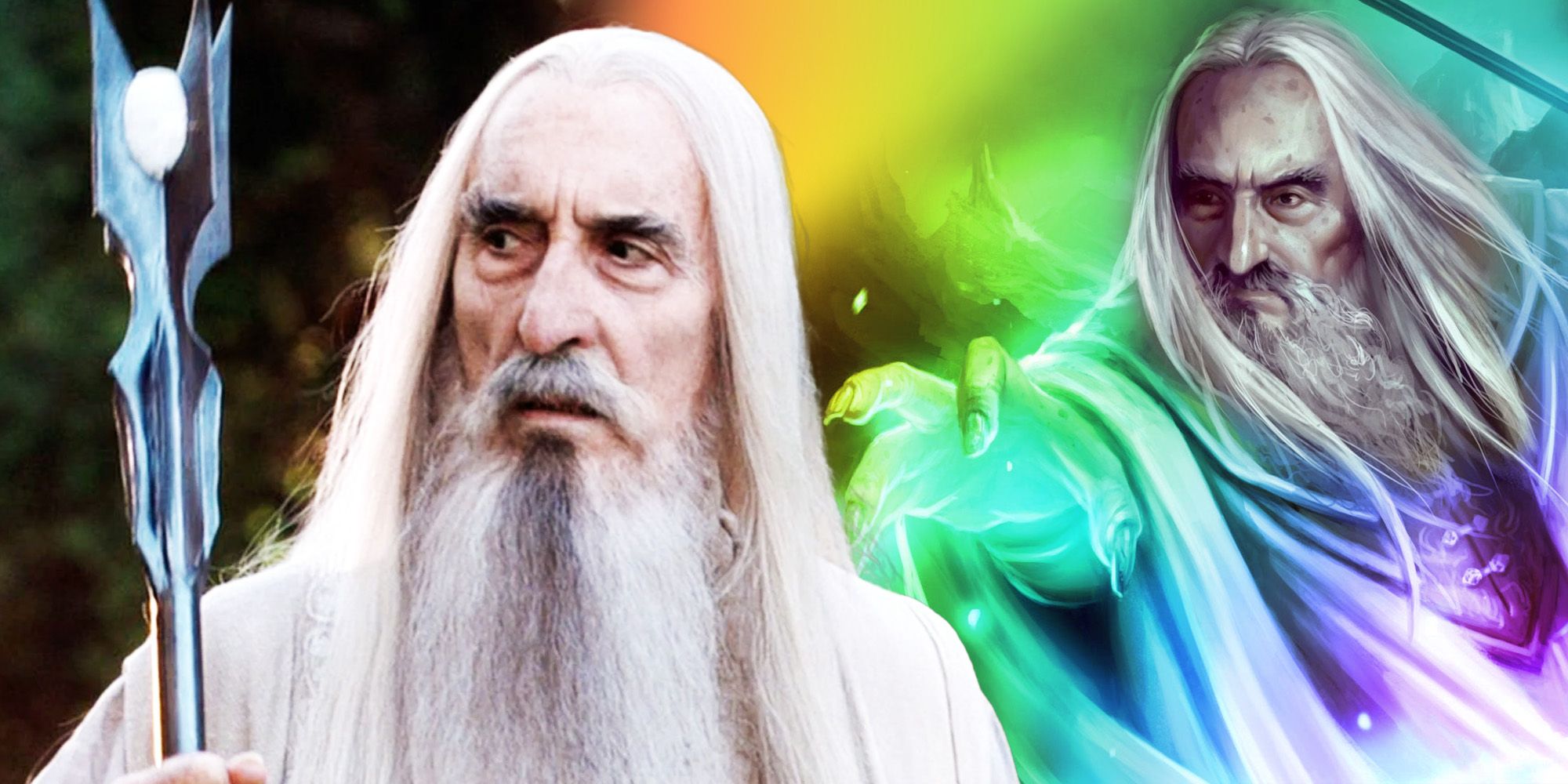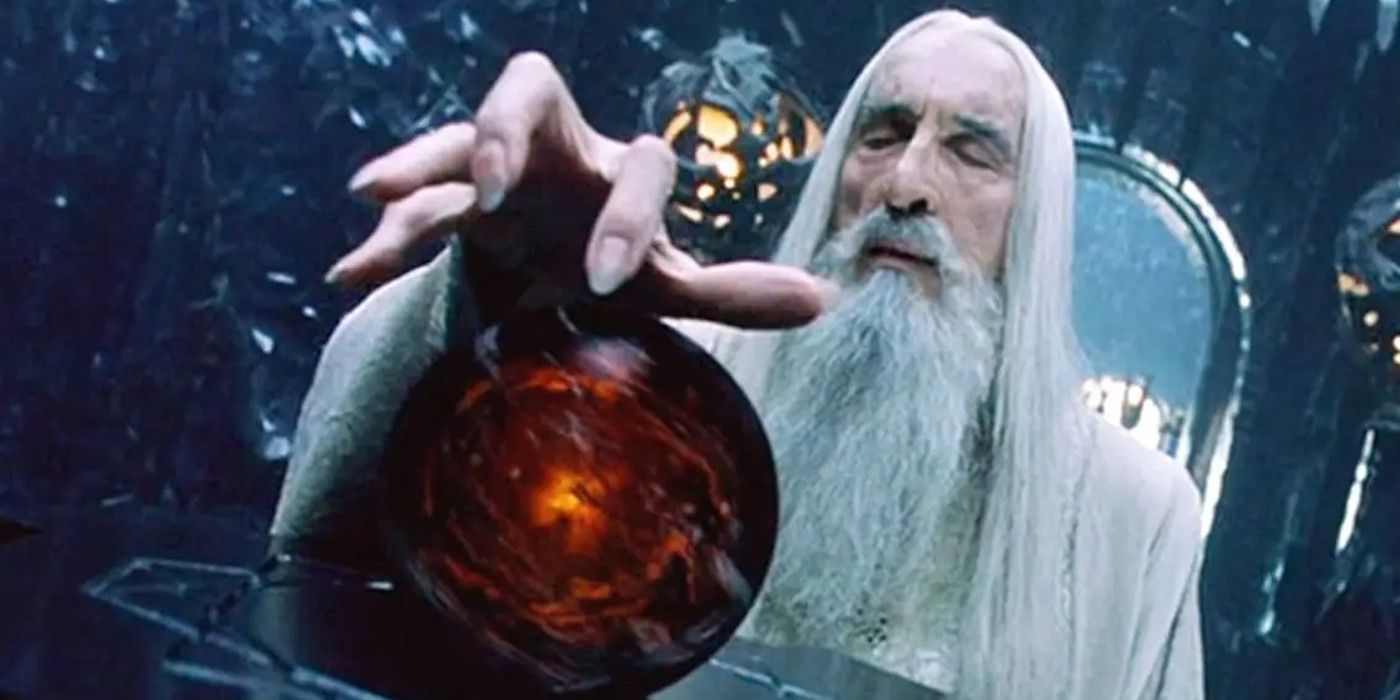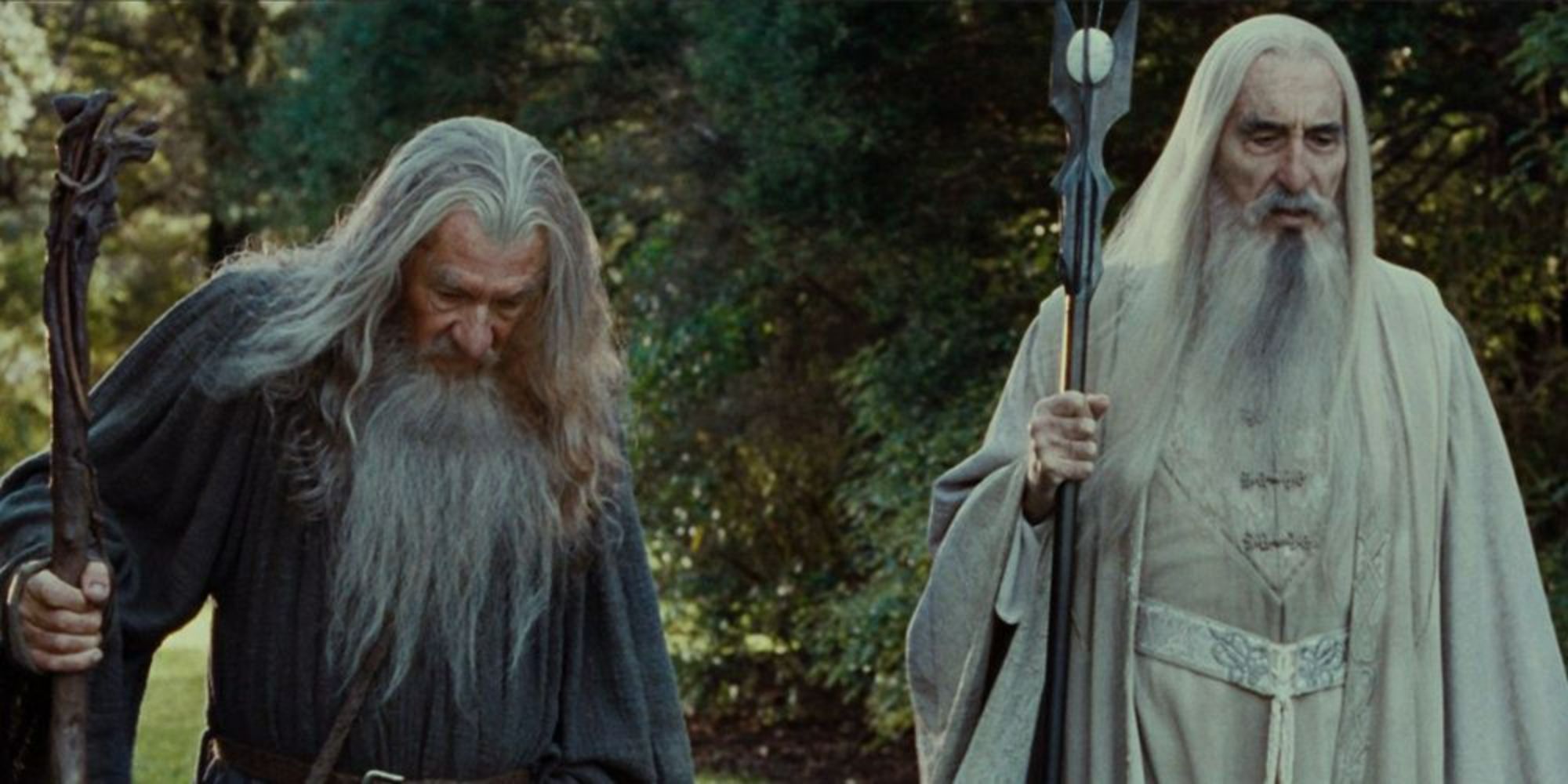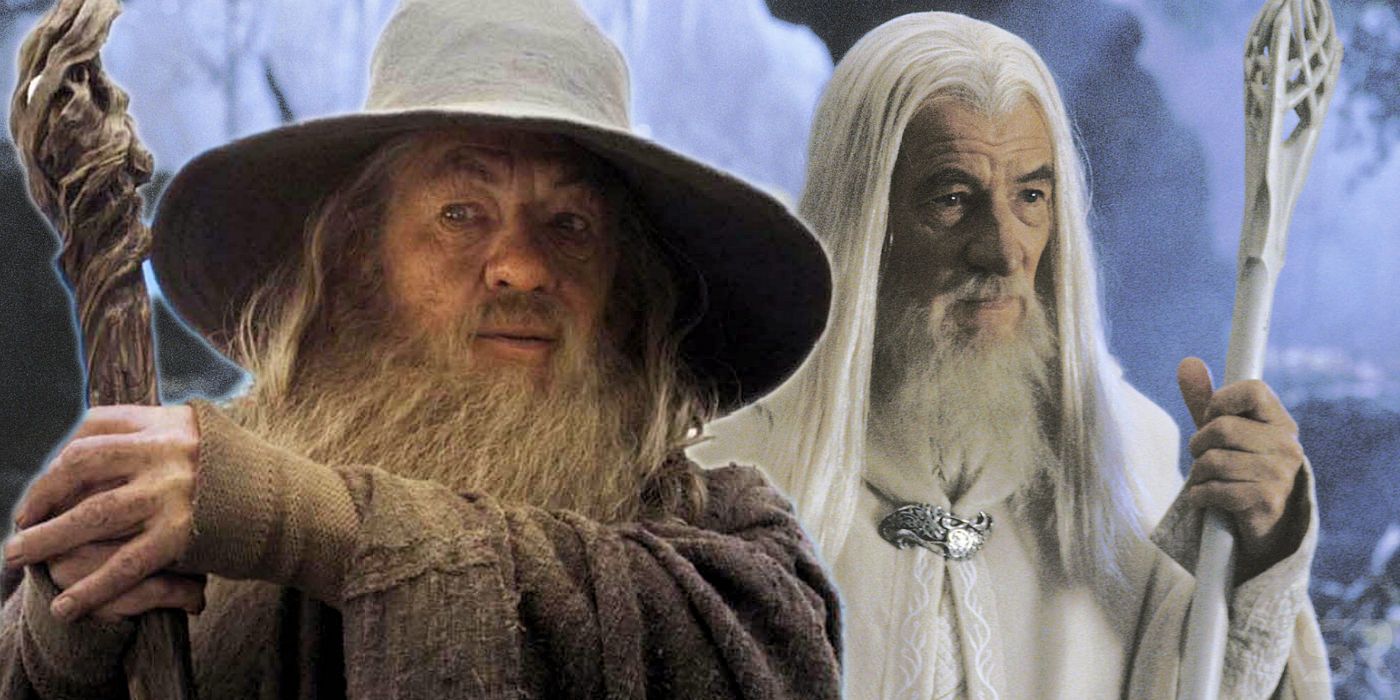
The likes of Saruman, Gandalf, and Radagast were more than just wizards. In truth, they were members of a race known as Maiar that helped create Arda (Middle-earth’s world) thousands of years before The Lord of the Rings started. They originally served under the Valar in Valinor, but a few were sent to Middle-earth to help stop Sauron, who had also been a Maia. These emissaries were called Istari, and they were ranked by the color they claimed for their wizard forms. As was demonstrated in The Lord of the Rings, these colors could change, and that all started with the old wizard Saruman.
Saruman The White Became Saruman Of Many Colors In The Lord Of The Rings Books

The scene where Saruman revealed himself to have turned from the forces of good in the Lord of the Rings movies was iconic, but Peter Jackson’s The Fellowship of the Ring left out one of the best parts. In the book, Gandalf suddenly realized something significant had changed about Saruman’s appearance, though he hadn’t noticed it initially. It revealed just how far the wizard had fallen and showed for the first time that the “White” position had been vacated:
“‘For I am Saruman the Wise, Saruman Ring-maker, Saruman of Many Colours!’ I looked then and saw that his robes, which had seemed white, were not so, but were woven of all colours, and if he moved they shimmered and changed hue so that the eye was bewildered.” – Gandalf, The Lord of the Rings: The Fellowship of the Ring
Though Saruman’s robes had looked white while Gandalf still believed him to be on his side, the wizard’s declarations of power revealed that the threads had changed. This was an important symbol, showing that Saruman was no longer pure as he was supposed to be. He sought to be stronger than Sauron and had even tried to make a Ring of Power for himself (which Gandalf had noticed on his hand). The wizard became the self-proclaimed Wizard of Many Colors—and thus, his villain arc fully began.
Saruman’s Color Change Foreshadowed Gandalf’s Lord Of The Rings Arc

Sauron’s technicolored robes would have been an impactful moment for the Lord of the Rings movies, especially as an antithesis for Gandalf’s later ‘Gandalf the White’ reveal. However, given that the Istati’s colors were never even fully explained in the books, it might have made the situation even more confusing on screen. Still, this scene held significant importance in the books since it was the first hint that Gandalf would see a considerable transformation later in the Lord of the Rings story.
Though Saruman revealed himself to be of Many Colors in The Fellowship of the Ring, it wouldn’t be until The Two Towers that Gandalf officially took his place as the White Wizard. Still, from that moment on, it had only been a matter of time before the transformation happened. The Istari needed a leader, and Gandalf was the obvious yet reluctant choice to take Saruman’s place. He likely realized this too. So, from the moment he saw the shining threads of many colors on his predecessor’s robes, his Lord of the Rings journey from Gandalf the Grey to Gandalf the White began.
Why The Colors Of The Wizards’ Robes Is So Important In LOTR

The colors of the powerful wizards of The Lord of the Rings were never fully explained, but that doesn’t detract from their importance. In J.R.R. Tolkien’s other various works, the Valar are often associated with color as well, especially regarding shades of grey and white. Naturally, white typically represents purity. On the other hand, grey was associated with confusion, sadness, or reluctance. These same ideas were symbolically and literally applied to Saruman and Gandalf. The former gave up his purity for the sake of power, while the latter had to move past his reluctance to accept his divine role.
Before Gandalf came to Middle-earth, he feared the idea of facing off against Sauron. He reluctantly agreed to play his part but was happy to sit second seat to Saruman (who had no issue accepting power). In the form of a wizard, Gandalf appeared as a simple old man, an idea that was driven home by his gray color. However, once Saruman claimed his flamboyant robes, Gandalf knew that he had to push past his fear and become the pure being Middle-earth needed him to be—and fulfill his destiny of leading the people of The Lord of the Rings in their victory against Sauron.





